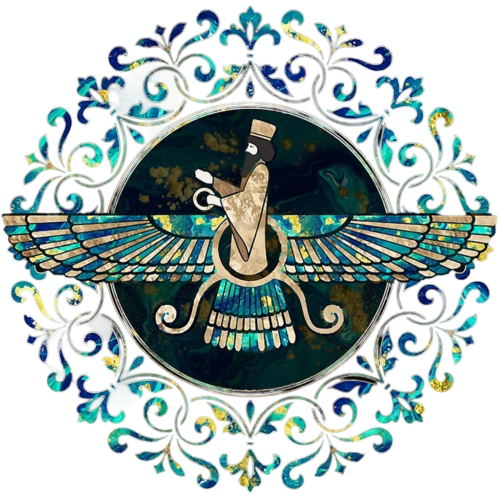Polish Carpets
“This type of Persian rug , woven from pure silk with gold threads, belongs to the period when the silk textile and carpet weaving industries of Kashan reached the peak of perfection and luxury,” according to Demande, who is quoted by Hassan Naraqi. Since they were initially discovered in Poland, these gold-woven carpets came to be known as Polish. A bit lower than Demande, Hassan Naraqi states: “The King of Poland despatched an Armenian trader called Muratovich to Iran in the year 1014 AH/1605 in order to bring with them the finest and most famous carpets for the Polish royal residences. Polish Carpets
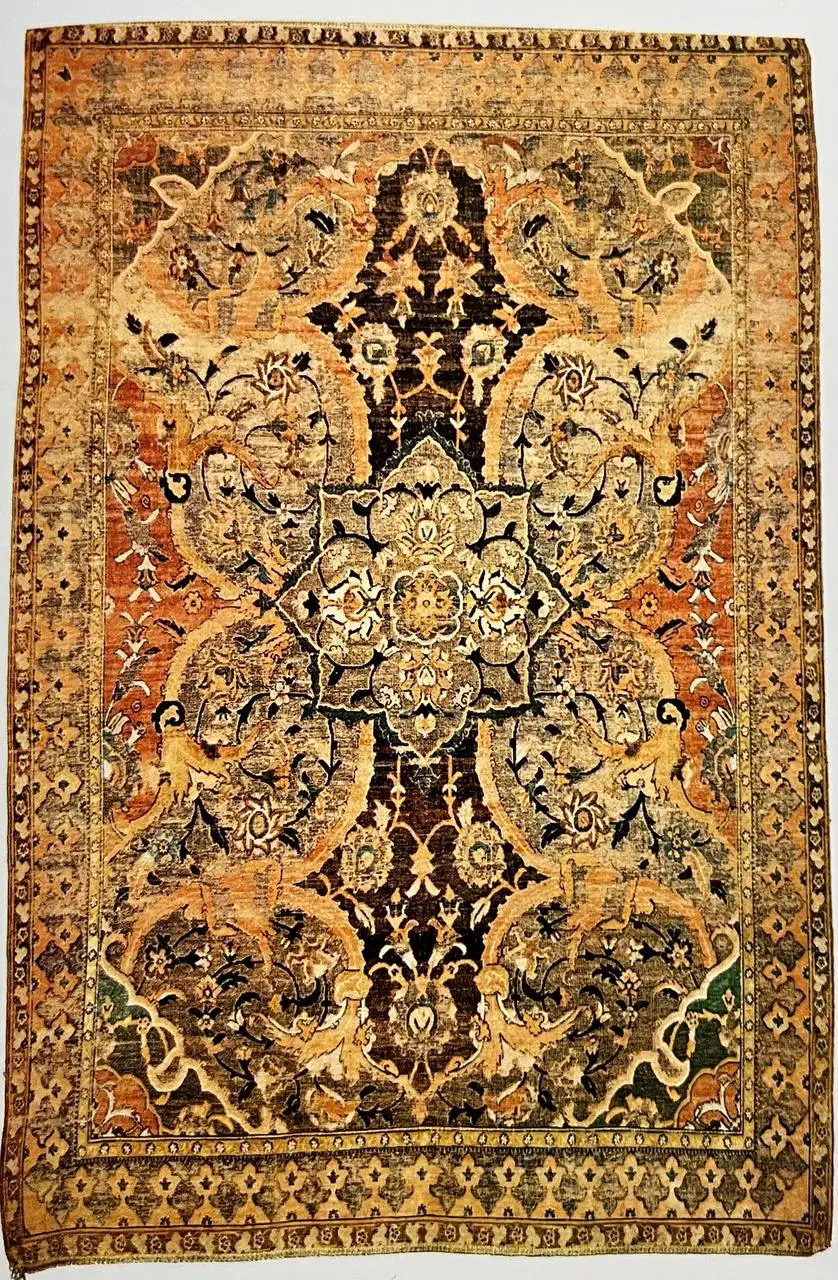
The Munich Residence Museum now houses four of them.However, we now know that these are specially designed Silk carpet that were woven in Kashan workshops and given as presents to European kings and courts. The renowned Coronation carpet was one of six gold-woven carpets sent to the Duke of Holstein by a party from Iran in 1639. Polish Carpets
Polish carpets got their name since they were originally acquired in Poland and some of them feature the Polish state eagle. Based on the collected records, it has been shown that Kashan is where these Silk rugs were woven.
Pope states: “Polish is another amazing and remarkable product that emerged from Kashan’s workshops; it has nothing to do with Poland, but the Poles were the first to recognize the worth of these carpets and gather them.” Polish Carpets
While some of them are purple and ruby, the majority of the pieces employ new hues that were made possible by the advancements in dyeing technology at the time. Everywhere, yellow—especially brilliant orange and maroon—is employed and adorned with vivid green.
This shade of green has just made its way into Iranian workshops, where it was utilized to enhance the beauty of the gold and silver threads. Over time, several of these gold-woven carpets have sustained significant damage; the gold has been obliterated, the colors have faded, the pile has vanished, and the silver has gone black. Polish Carpets
However, while looking at their original shape, it’s safe to say that these carpets are unmatched worldwide. The sight of carpets woven with gold has awed and captivated European tourists and art collectors with their beauty and magnificence.
There is an image of the hunting curtain, which is part of the More collection. One of the finest miniatures of the mid-tenth century, which is renowned for its weaving, is this curtain, which is as exquisitely beautiful as any of the great Gothic carpets. The finest carpets are as elegant as a portion of another curtain that was made in the same workshops. The term “under-the-table carpet” refers to these rugs.
*Click on the opposite link to see precious Iranian handmade and machine combined silk carpets*
Ottinghausen states: “We have important evidence that dates the weaving of this carpet to the beginning of the eleventh century,” in contrast to the previous belief that Polish carpets were produced in Polish workshops. Polish Carpets
The Hunting Carpet and two more carpets adorned with the Polish family crest were included in the dowry for the marriage of Polish princess Anna Catherine of Constance and Bavarian count Philip, according to records from the Bavarian royal court. An Armenian trader named Muratovich commissioned these carpets for Sigismund III Vasa, the Polish monarch who briefly ruled Sweden. In the years 1010 and 1011 AH, they were weaved in Kashan.
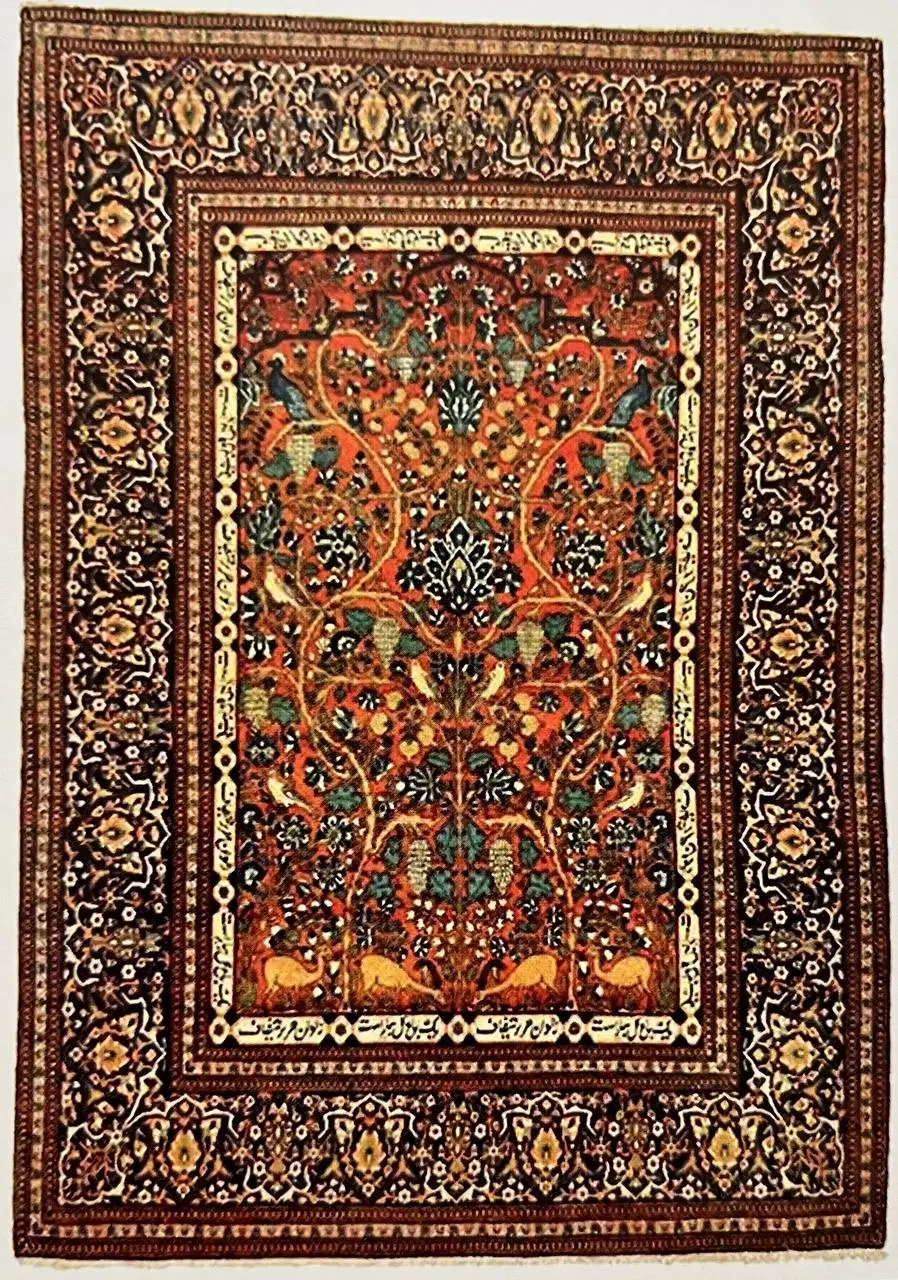
The Krarar Towski family formerly had one of these silk rugs, which is currently housed at the Metropolitan Museum. The family crest on this carpet was long believed to be Polish.
For many years, this hypothesis has been refuted, and it is now commonly believed that these carpets were made at workshops in Kashan and Isfahan. Shah Abbas I started the creation of silk carpets, which continued by Shah Safi I and Shah Abbas II. According to Krusinski, state workshops increased the king’s fortune by exporting pricey silk garments to Europe and even India via official merchants. Interesting allusions to eleventh-century silk rugs may be found in other European texts. Polish Carpets
While at Kashan in 1017, the priest Paul Simon “considers it a wealthy city where silk and gold-woven carpets, embroidered and velvet fabrics, and woven curtains of the Aras type are woven.” Vase Persian rug designs According to Pope, the village of Joshqan is where both the vase carpet at the Victoria and Albert Museum and the one in the German National Museum in Berlin were produced.
“Although this village has rightfully gained fame in Iran, this fame is limited because this village is a region that has presented a type of texture, color, and design in its carpets for 200 years, and perhaps even more of this period. Therefore, if we ignore the wear and tear and rust that the passage of time leaves on old carpets, the current carpets of Joushqan are no different from the carpets that were woven in this region two centuries ago,” Edward says in response to Pope’s assertion that this and several other similar carpets were related to the town of Kohistan, Joushqan attributes.
However, Mr. Pope is unaware that a broken design has always been employed in the weaving of Joushqan carpets, and that during the course of 200 years, none of the primary patterns and flowers seen in Joushqan carpets have been woven with a circular pattern. Polish Carpets
It should be mentioned that mountain communities do not have sophisticated carpets with elaborate designs like the vase pattern, which call for the cooperation of several talented designers, painters, dyers, and expert carpet weavers with years of experience. Ettinghausen has doubts about the carpets Pope claims are mostly Joshaghan’s, and he thinks some scholars have proposed Kerman. It’s also probable that Isfahan produced some silk Style and maktab of Persian carpets, vase carpets, and carpets with flowers.
The Pope states that “the weavers of Kashan have proven that they can weave pictorial carpets.” “As good as the best work of the Chinese and European masters of the Gothic period.”
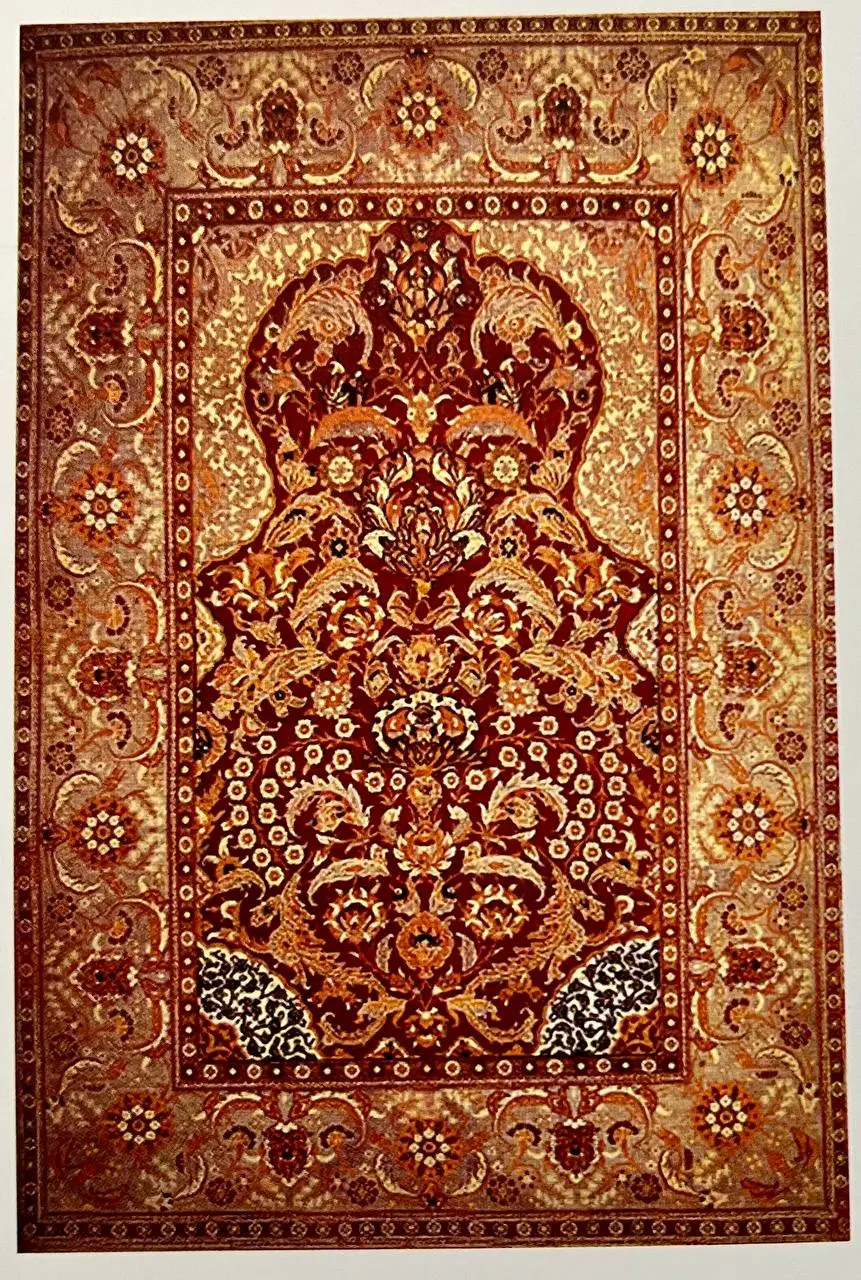
The Joshaghan Carpet
The Origins of Persian carpet, which are typically of the Joshaghan design, are well-known, and Joshaghan has long been one of Iran’s most significant carpet weaving hubs. The history of Joshaghan carpet weaving predates the Safavid era, despite the fact that its carpets and rugs are well-known worldwide during that time. Polish Carpets
At reference to the history of carpet weaving at Joshaghan, the Pope stated: “Josaghan is one of the four centers from which carpets were sent to the Indian court.” Regarding Eskandar Beg Turkman, he also mentions “the silk carpets of Joshaghan and Kerman, which the Ottoman ambassador received,” and he believes the royal carpet weaving factories were located in Joshaghan. Joshaghan has long been known for its silk carpet weaving, and during the Safavid era, it was home to several royal studios.
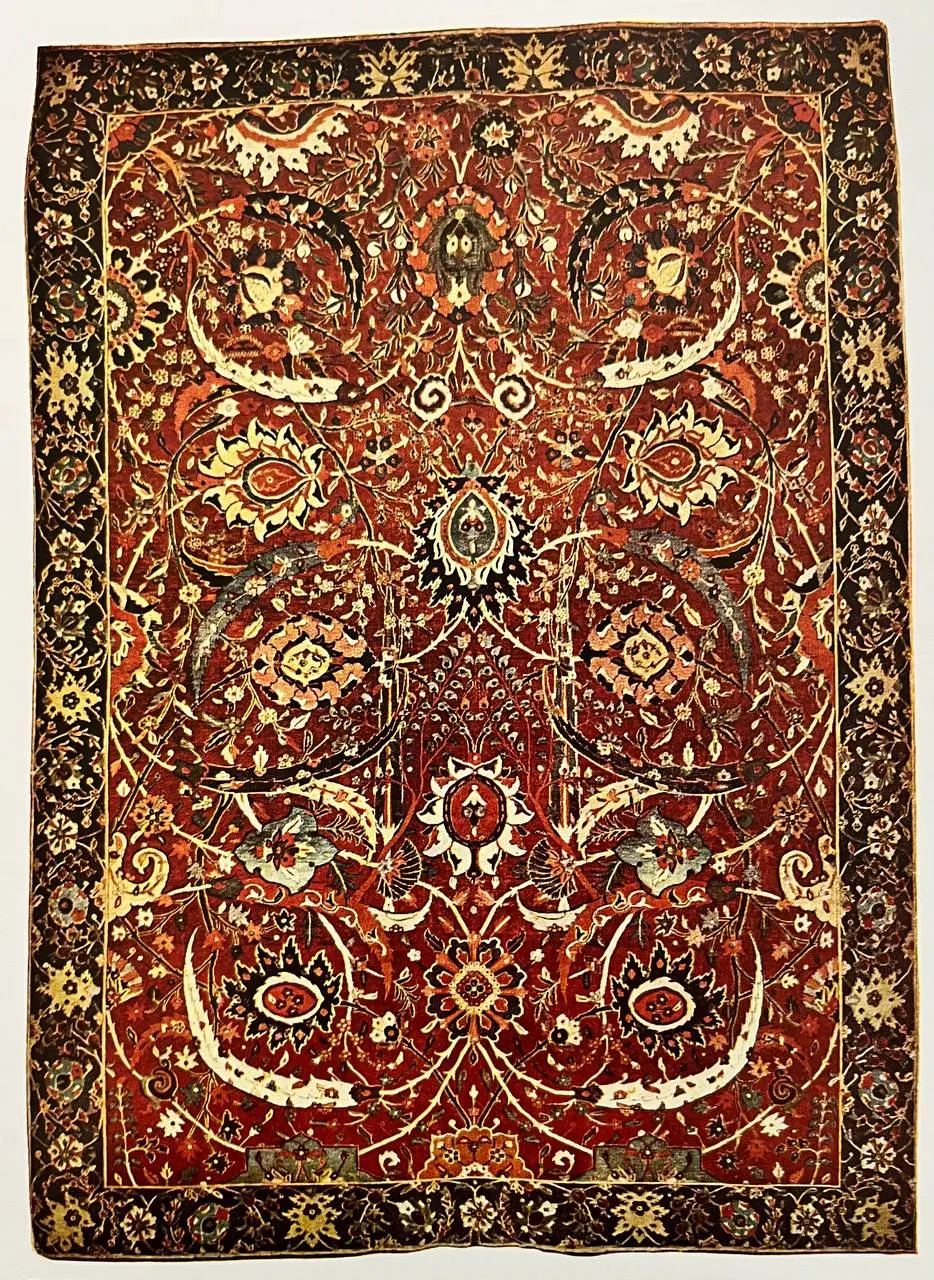
In a 950 AH decree, Shah Tahmasp Safavi gave the ruler of Khorasan detailed instructions on how to welcome Muhammad Humayun, the king of India. He also mentioned giving Humayun Shah special presents, such as three pairs of 12-yard Joshqan Persian rugs and velvet carpets woven with gold.
A poem on the gold-woven Joshqan carpet was written by Safavid poet Hakim Rukn-ul-Dawlah Masih Kashani. These carpets, which were made by Nematollah Joshqani in Joshqan and are now housed at the museums of Qom and Ancient Iran, were commissioned by Shah Sulayman Safavi in 1082 AH for the grave of Shah Abbas II in Qom.
